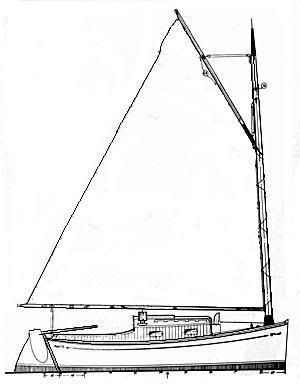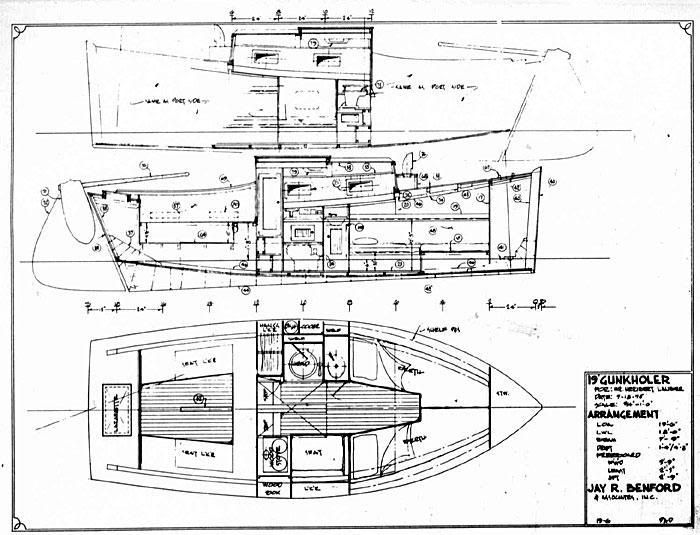Following my previous post, I have done my homeworks starting to crunch numbers in order to design a pretty semiscale catboat footy for Rick ( or everybody else )
I hope it would be interesting to share with you my steps, showing how I will try to finalize the project.
first of all , let’s start writing a basic “wish list”
the model should be :
- an “almost” scale model based on a benford design cat boat
- fully compliant to footy class rules
- pretty ( very pretty )
- a good sailer, even if not an extreme racer
- seaworthy enough to sail under a breeze around 10 kts
- easy to build using balsa or thin plywood
basic design decisions
- removable fin keel , to suit different wind speed, for easy transportatiton, or for fine tuning of sailing performances
- the hull should have an “hold space” to insert a removable box ( or something similar ) for easy replacement of electronic stuff
- the model should be able to use both very advanced and lightweight electronic , or something a bit heavier ( big receiver, hevier servo and so on )
design philosophy
the design of “Brando” ( this is the name ) should be very conservative, and overall dimensions are to be not far from succesful tested models ( cobra, razor, kittywake, bob about - just to mention few of them )
weight estimation
hull 100 gr ( very conservative, could be lighter )
rig 25 gr ( 20gr mast,boom,gaff + 5gr mainsail )
RC 150 gr ( midway between micro receiver and lightweight batteries, and heavy old big receiver with 4 AA )
blades 25 gr ( 20 gr finkeel + 5 gr rudder )
ballast 200 gr ( the “usual” 7 oz fishing sinker )
total displacement 500 gr ( 16.6 0z ) : a very conservative intermediate solution
a very light boat can go down to 450 gr or even less
Main dimensions
overall lenght should be aimed to few millimeters less tha 1’ to take in accound building mistakes : 300 mm
waterline lenght will be around 280 mm considering a sloped transom stern, and an almost plumb vertical bow
max beam will a bit less than maximum allowed ( let say around 140 mm ) to retain typical catboat lenght/beam ratios , as well to have plenty of space for rc
waterline beam will around 120 mm, as good compromise between enough stability and not too much wetted surface
a nice flare of topsides, together with a nice sheer will improve a lot hull aestetic
hull draft will be around 25 mm ( one inch ) assuming a block coefficient 0.55 and displacement not far from 500 gr
hull depth will be close to 60 mm ( at midship ) looking at a “deck underwater” heel angle close to 30 degrees
sail area will be around 900 cm2 ( 140 square inches ), to be increased for light wind condition
keel area will be approx 70 cm2 to have a sail area / keel ratio between 7% and 8% ( the best coefficient used on succesful footy )
All considered, these figure are not far from many existing footy, most probably remarkable differences are :
- a sloped transom
- flared topsides ( hull narrower on waterline then deck )
- a nice sheerline instead of an ugly straight profile
Next time I will try to blend all above mentioned numbers looking at a nice ( and simple ) hull shape and pretty sail plan
stay tuned 
flavio



